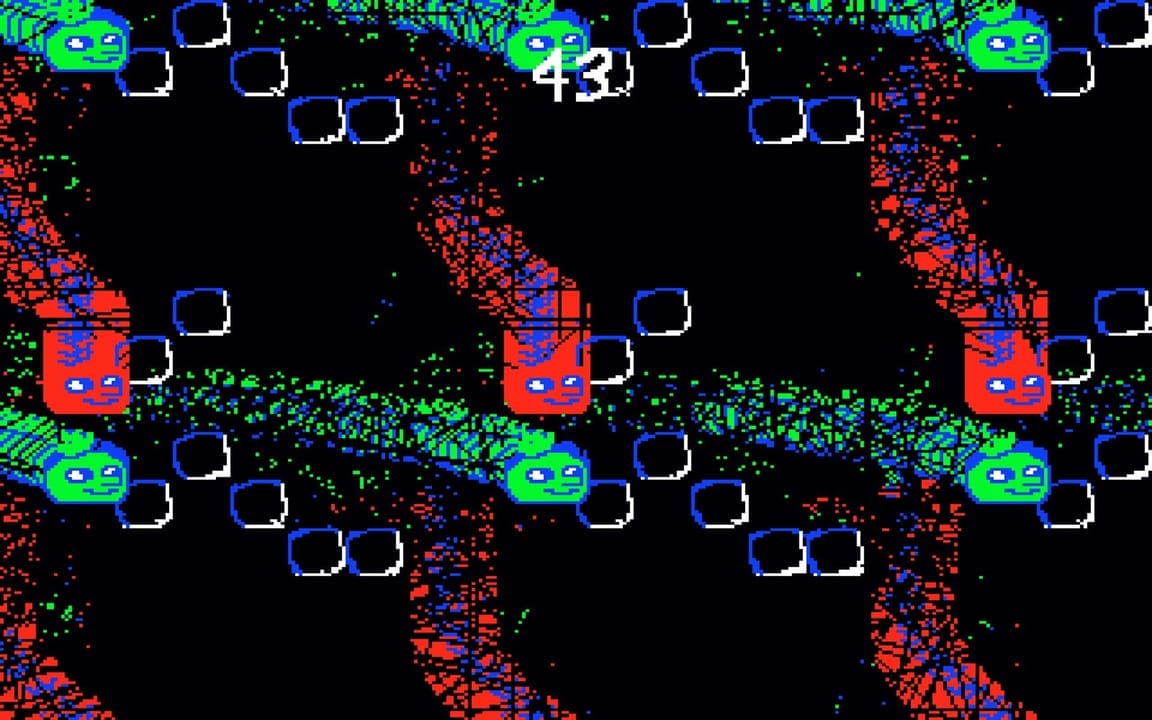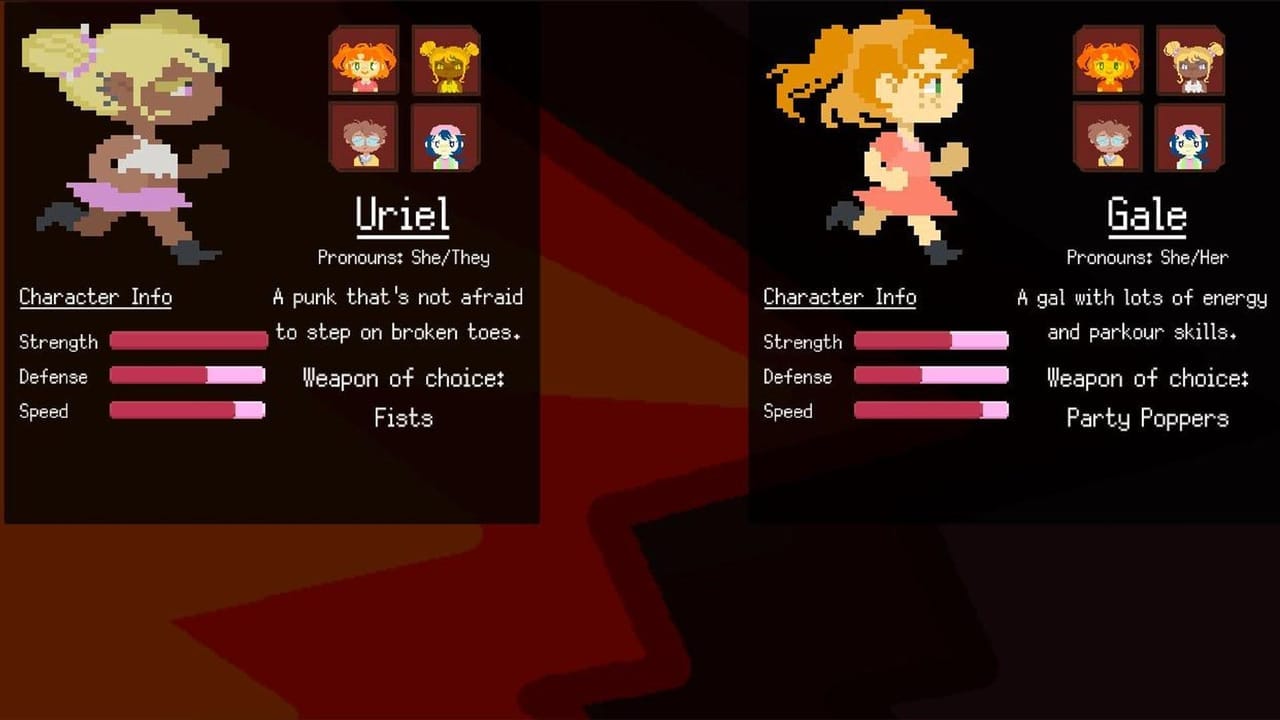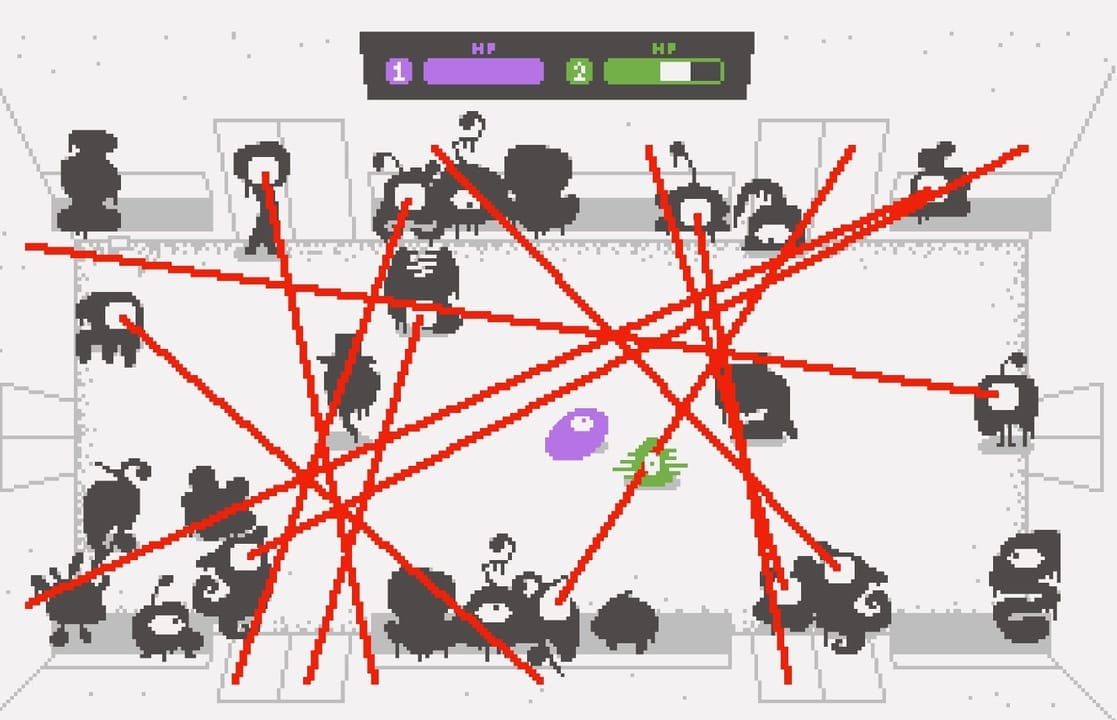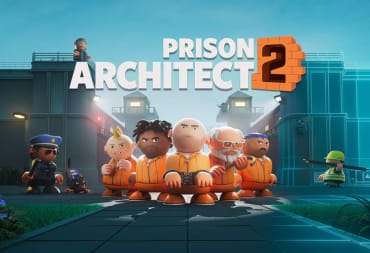The Play NYC 2019 Graffiti Games made an interesting showing this year. Five developers from different walks of life came together to create compelling (and sometimes fun!) video game experiences centered around the theme of LGBTQ+ representation and portrayal.
Each of the Play NYC 2019 Graffiti Games are a reflection of the person who made them. Some are better suited to an art gallery than a Steam Store page; others could easily be released as a commercial product. And then there are the one or two that surely fall in the middle, being quirky, subversive, and entertaining all in one go. Robert Grosso and I endeavored to look at all five of the Play NYC 2019 Graffiti Games and see what they were all about — along with the people who made them.
The Concept Behind the Play NYC 2019 Graffiti Games
Play NYC has had Graffiti Games since its inaugural convention in 2017. Last year's group of games focused on immigrant developers, and the Play NYC 2019 Graffiti Games aimed to tackle the theme of LGBTQ+ representation and perception.Each developer was compensated for developing a unique game from scratch with a time frame of six weeks. Not every title survived the collision with reality on the show floor, but they all had something to offer. Let's get into looking at each of these individual Play NYC 2019 Graffiti Games!

Smush Bois — Blake Andrews
by Robert Grosso
Blake Andrews is the definition of an auteur. Hastily scribbling information on a piece of written cardboard, pointing to the rest of the work on the website Glorious Trainwrecks—the person known as everythingstaken has close to 100 small games under their belt, each as weird and unique as the last.Some of their games include StabFrame, a game “inspired by the appropriation of African American culture in the witch house genre of electronic music.” You also have February 2015, one of three games in a series created in 2015 that are loosely based on singer Taylor Swift, namely conspiracy theories against her from boards like 4chan. To say the least, Andrews anything but conventional.
Yet even Andrews admits Smush Bois is their most conventional game. A simple brawler where funky-colored avatars need to stomp on the heads of the other players, Andrews wanted to create their own version of Super Smash Bros. Featuring four characters, including Gay Wario and two tomatoes, the chaotic action on the screens are splashed with chalky-styled wire graphics and bright color effects, reminiscent of the hyper-funk zone from Toejam & Earl.

Smush Bois seems like a throwback to '90s nostalgia, but Andrews wanted to create something out of their comfort zone; something that was fun. Andrews admits that personally making games is not about making them fun, but making them interesting. Uniqueness is certainly part of the charm Andrews has, but there is always another layer beyond being anti-fun. Most of Andrews catalog, where seemingly irreverent, touches upon the old-school Newgrounds spirit of oddball humor and countercultural tastes.
Some games are designed as protests, some are just fever dreams of randomness. For Smush Bois, it is about making something purposefully appealing to players while retaining the trademark chaotic design style. Ultimately, the whims of Andrews becomes the code they create over purposefully staying in the comfort zone of counterculture sensibilities for the love of making games they want to make over anyone else.
You can keep up with Blake Andrews on pbjabcusa.com and Twitter.

Hello, It's Still Me — Rogue Fong
by Robert N. Adams
Hello, It's Still Me was an ambitious title from indie developer Rogue Fong. This entry into the Play NYC 2019 Graffiti Games was to make use of both touch and spoken word in an intriguing mix of mechanics about coming out as queer. Unfortunately, development met with disaster.The idea behind the game was simple enough in concept. You'd begin by writing an e-mail coming out as queer and sending it out to your friends and family. Positive and accepting replies would start to stream in, and you would have to respond to those either by speaking words aloud or moving a VR controller to respond. Eventually, the game ends when you are "overwhelmed by love & support" because you just can't keep up with the replies.
Fong's initial tests worked great. Then, the actual setup in the hall just had problem after problem. The microphone couldn't pick up a player's speech accurately due to all of the background noise. Rogue even took a moment to relocate the game setup to a quieter room, all to no avail. This required an on-the-spot rework of Hello, It's Still Me, turning it into a much more passive experience than originally intended.

I first went hands-on with Hello, It's Still Me to see what it was all about. The room you sit in is beautifully designed, much more than was necessary. It must have been tempting to simply have a screen of messages floating in the void, but the developer went to the trouble to flesh out an entire bedroom for the player to sit in. Believe me, I checked—I looked all around, above, and below and found it rather nicely decorated.
The floating handwritten messages were drawn by hand, but not all of them were as legible as intended. Had I been sitting precisely in the center of the play space, I would have been fine. Unfortunately, I had drifted a bit to the side, and I wasn't able to read everything that was coming in.
Eventually, the experience ended as if I had failed. I would have really loved to see what it would have been like to actually play this game, but alas.
At the time I played Hello, It's Still Me, Fong wasn't at the booth for the game. I left my card and a request to follow-up later and that's when I learned about all of the challenges that cropped up once the game was brought to the actual venue for Play NYC. I also learned that the trio of paintings behind the play area was painted by Fong and that every created game is accompanied by a painting done by the developer, making for an interesting mix of digital and real-world art.
Hello, It's Still Me was an interesting concept that unfortunately didn't survive contact with the real world. Fong says that development will continue, and that we may see a public release of the game. I hope it does come out; I'd sure like to play it.
You can keep up with Rogue Fong at roguef.com, Twitter, and Instagram.

Rebel Runners — Geneva Heyward
by Robert Grosso
Rebel Runners is a simple game; a co-op infinite runner where players select one of four characters and game modes and see how far they can get. Designer Geneva Heyward, however, in showing her support for the LGBTQ community, wanted to purposefully push the envelope a bit not in terms of gameplay, but in terms of message.Each character, for example, represents the diversity of the LGBTQ community, from transgender to asexual runners. To help hammer that home, as they run their pride flag streaks across the screen behind them. This gives the game a ton of color and becomes just as eye-catching, despite its simplistic graphical design.
"This would affect the gameplay, but the four unique characters also adds another layer to what could happen,” said Heyward. “Each character has different stats, backstories, and identities, so it was even more fun to watch players try to choose their 'main' runner during the event."

The real focus of the game is in the title. Each runner is described as an outsider, a rebel that is trying to fight the system that they run against. The gameplay modes help reflect this.
“I feel like a lot of folks have played an infinite runner before, but for ours we added characters, goals, and locations that players could choose,” said Heyward. “For example, you could redistribute the wealth in a subway or destroy everything in a forest." Other simple score chaser modes also exist, but each level and gameplay mode serves a point, positioning the runners as the underdogs in society, desperately fighting to keep up.
It is the quintessential runner game with a rebellious twist, the kind that is sometimes showcased by Graffiti Games. The fun factor is of course present, but the point is less about fun, more about the statement made on screen. For Heyward, the statement is plain for anyone who played the game, yet the purity of it is what makes it fully engaging.
You can keep up with Geneva Heyward on gensuta.carbonmade.com, Twitter, and itch.io. You can also play Rebel Runners right now on itch.io.

Staring Can Be a Form of Harassment — Ayla Myers
by Robert Grosso
The title Staring Can be a Form of Harassment seems purposefully evocative, but part of the reason for this was by design. Developer Ayla Myers is a queer programmer living in New York. It turned into one of the premier Graffiti Games, however, and easily one of the most interesting to play on the Play NYC show floor.Myers goes into detail on the design process of her game, candidly talking about her struggles in finding a balance between engaging the audience and having fun.
“I struggled to find a way to make a game out of what was, for me, a pretty negative experience,” she said in an interview with TechRaptor. “Being on the receiving end of a hateful stare sucks, and when it's 10 people staring you up and down on a subway car that can start to feel awful. But that experience doesn't mesh well with the games I tend (and love) to make, which are all pretty arcade-y: think high scores, power ups, bouncy animations, cutesy chiptune sounds, etc.”
Myers is already an accomplished game designer, but purposefully never releases her titles commercially; she instead focuses on the connection she makes with players in the moment. This became a driving force with the design of Staring.
“Two weeks prior to the event, I embraced that mismatch. It is a game about the gross experience of being stared at but reimagined into a fun level-based game where you're dodging laser-like stares and healing your partner's health bar with loving glances of your own," Myers said.

Unlike other Graffiti Games at the show, Staring, despite the title, showcased a polished product with simple dual-stick controls that was both fun yet engaging for the audience. Myers would dress up her corner of the show floor with black tissue paper blobs, each with multiple eyes drawn by passers-by and players alike, all the while having conversations with people to gather their own thoughts on the game.
“The heavy-handed name prompted a bunch of folks to start conversations with me about what it's like getting stared at,” Myers said. “At least two of those conversations were with people who actually disagreed at first but ended up seeing and respecting where I was coming from. And those are conversations I'm happy to have, since it's actually spreading awareness and getting people to expand their perspective.”
In the end, Staring is the type of game Graffiti Games is meant to be. Solely from the perspective of its lone developer, Myers gives us a little taste of what she personally has gone through but finds a way to twist it into something positive.
“I could have made a game that makes players feel how awful it is to get stared at, and maybe I could have gotten some folks to empathize with my experience and understand it better by doing that,” she said. “But I like making people laugh and have fun, I don't want to drop a gross experience on anyone like that. And I think it's actually kind of beautiful that something positive has arisen from a source of negativity.”
You can keep up with Ayla Myers on brid.gs, Twitter, YouTube, Twitch, and GitHub.

Insufficient Adjectives — Dean Razavi
by Robert N. Adams
Dean Razavi's Insufficient Adjectives was not only the first of the Play NYC 2019 Graffiti Games that I hit up—he was the first developer I saw. I've been familiar with Razavi for years now, stretching back to when he was showing off his game Vidar at Playcrafting events. This year, he brought three games with him to the show, but my immediate concern was with checking out his Graffiti Game.Insuffiicent Adjectives is my actual nightmare. A truck will spawn on the city map, and it has three adjectives associated with it. You must then use those adjectives to determine where exactly the truck is delivering its product to. After you have a handle on that, you have to take road pieces from the bottom of the screen and place them in the truck's path to guide it to its destination in real time, much like the classic title Pipe Mania (also known as Pipe Dream).

Guiding one truck along is challenging enough. You have to assess the destination and then pick up and place the road pieces at the bottom in positions that will hopefully guide it to the correct delivery location. This is all done in real time, by the way; you have to act fast or you're going to fail.
What's worse, there is no "dump" mechanic for useless pieces. You just have to pick them up and slam them down somewhere, hoping that it won't cause a future accident. Not too long after the first truck spawns, a second follows, and then a third, and now you're trying to juggle three trucks at once, all traveling on their own distinct paths.
"Oh no," I audibly stated as I realized how completely and totally boned I was.
Once three trucks crash, it's game over. I played Insufficient Adjectives twice and managed to deliver exactly zero packages to their proper destination. I wouldn't just be fired by the postal service at that point; I think I'd be shot on sight. And I had a boatload of fun failing.
Dean was inspired to make the game thanks in part to his husband, who actually works at Amazon. The entire concept came from the idea that it is becoming increasingly difficult to define people and their relationships. What I've learned is that it's also pretty darn difficult to get a truck where it's supposed to go.
Insufficient Adjectives was one of the more brutally challenging Play NYC 2019 Graffiti Games, and I thoroughly enjoyed it. Dean is exploring the idea of releasing it online publicly. If and when he does, you should absolutely check it out.
You can keep up with Dean Razavi at razburygames.com, Twitter, and YouTube.

And that's it for our coverage of the Play NYC 2019 Graffiti Games! Playcraftting executed the concept beautifully once again, and many of the developers have said that they are going to continue their work on these titles in some capacity. Heck, last year's Graffiti Game Llama Express made a return as a regular exhibitor and is continuing development, so we may well see one or more of these titles in a future show.
Do make sure to check out the varied work of these talented developers at their respective websites—what we've seen here only scratches the surface of the quirky and interesting games they've created.
What do you think of the Play NYC 2019 Graffiti Games? Are you interested in playing game installations that are only around for a limited time or is it essential for you to be able to take something home? Let us know in the comments below!
Check out what else we saw at Play NYC by going to our Play NYC 2019 Coverage Hub.
Have a tip, or want to point out something we missed? Leave a Comment or e-mail us at tips@techraptor.net












